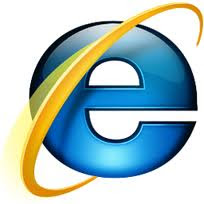
Did you ever think about maybe using a safer and more secure web browser to save you time, money, and headache in the fight against malware? Most users are too preoccupied with other things or too lazy to get started making the change. Sometimes they stick to the old ways because they are afraid of the new. Not having enough information about what is involved stops others from change. Other times they never start because they don't know how. Not knowing the benefits keeps others from changing for the better.
When you understand more about it, most of those hindrances for changing for the better tend to go away. Let's have a look at the 3 main reasons that people decide not to use Internet Explorer any longer and use a safer and more secure alternative. Doing so will result in saving users valuable time, money, and headache in increasing your malware protection.
Reason Number 1, Internet Explorer is the single largest object malware criminals target to compromise computers of any size for their financial gain.
It matters not what one thinks of Microsoft, the online criminals simply aim for the largest target, which at this point in history is Microsoft and Internet Explorer. 10 years from now it could be Google or Macintosh. So the point here is that if you stop using the largest targeted browser and use something safer and more secure, doesn't it make sense to change?
O.K., I understand you when you object that "Internet Explorer is built-into every single Microsoft Windows operating system and will continue to. It just makes sense to use it. I need it and don't have much of a choice not to use it. Besides, I'm familiar with it and it would take too much time to change."
I understand your point, but think about the high number of vulnerabilities in Internet Explorer. Each vulnerability represents a real window of opportunity for malware criminals and other online enemies to enter into your computer and compromise your system using your valuable data for their financial gain. It only makes sense use a safer and more secure browser than Internet Explorer and immediately enjoy increased malware protection.
Reason Number 2, Google Chrome and Opera have proven to be a safer and more secure alternative in addition to not being as large as target as Internet Explorer.
Plus, Google Chrome uses the popular, powerful, and fastest "chrome" engine to power the browser. Google built the chrome engine for others to use, and now it uses "chrome" to power Google Chrome.
Chrome has many safeguards built into the browser, has many extensions and add-ons that allow you to do most everything you could ever do with Internet Explorer. Opera is another safe and speedy alternative that I have used occasionally.
So what about the other safe and secure web browsers? Years ago Mozilla Firefox was THE browser of choice next to Internet Explorer. Mozilla Firefox is also powered by the "chrome" engine however most recently became the target for such trojans as "ClickPotatoLite" (September 2010) I was faithfully and comfortably using Mozilla Firefox for a number of years up until this year and have since switched to Google Chrome.
I have used Apples' Safari browser, which is also powered by Google's "chrome" engine, however there are just as many vulnerabilities with Safari as in Internet Explorer 6 or 7. I must mention that Internet Explorer 8 is by far the most secure of all Internet Explorer browsers, however making the change from Internet Explorer will by default help you enjoy a greater level of malware protection. Despite Internet Explorer's vulnerabilities many people still prefer to use Internet Explorer as their default browser.
I can only testify that I have saved countless headaches, time, and money by using safer, more secure, and free alternatives Google Chrome or Opera. Many have made the switch because they wanted to gain one more advantage over online malware threats and enjoying a greater level of malware protection.
Reason Number 3. Think twice now to save from paying twice or spending twice the time down the road.
Thinking twice now by reviewing these insights and making the change now may well save you from paying twice for someone to rescue your computer from malware attack. Also, thinking twice now may well save you from having to spend twice the time in the future recovering your computer yourself or finding someone else to repair it.
Making the change now will most likely mean that you will have to spend a little bit of time transferring your personalized settings to your new browser, but most browsers import from other browsers by default anyway. So in reality it will take less time than you think. Once again, you should find your browsing experience with your new browser smoother, faster, less distracting and more enjoyable!
Consider those three reasons, evaluate them, and think about them. When you think about it, you can see that there are compelling reasons to consider increasing the level of malware protection and trying to use a safer and more secure web browser. What about you?
Seriously now, just think about it for a moment. Don't those reasons apply to you? Perhaps you really should use a safe and secure web browser to save you time, money, and headache in the fight against malware.
Source: http://bit.ly/l0BNHk





















